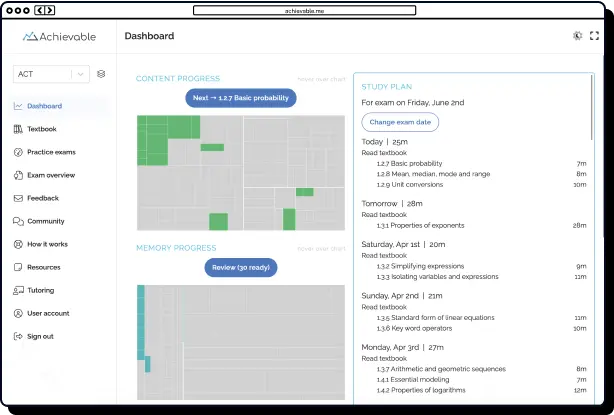
Life and health insurance: What they are, and how to get your license




Table of contents
- Life vs. health insurance
- Life insurance: Providing peace of mind after loss
- Difference between life insurance and variable annuities
- Health insurance: Covering essential costs
- Health insurance policies and regulations
- Medicare vs. Medicaid
- What’s not covered and why it matters
- How to get a license to sell life and health insurance
- Wrapping up
Life and health insurance offer valuable protection and security during the most challenging of circumstances. Facing a serious illness or the loss of a loved one can be emotionally overwhelming, and the financial impact often adds an extra layer of stress, as the costs involved in these situations can place significant strain on individuals and families.
Understanding the details of life and health insurance policies can also be daunting or confusing for many consumers. Coverage options, payment structures, and exclusions vary from plan to plan, often making the process of choosing the right insurance policy complicated or unclear. Fortunately, a knowledgeable life and health insurance agent can provide guidance, helping policyholders manage expenses and secure financial protection for their future.
Life vs. health insurance
Life insurance and health insurance are distinct yet complementary types of coverage used to cover costs related to illness or injury. Many insurance professionals opt to specialize in both, with numerous states offering a combined life and health insurance license. This option simplifies the process by allowing candidates to take a single insurance exam and earn the credentials required to sell a variety of policies.
For anyone interested in obtaining a life insurance license, health insurance license, or a comprehensive life and health insurance license, it’s important to understand how these coverage types operate and differ. The role of a life or health insurance agent extends beyond simply passing the insurance exam or achieving sales targets; it’s about empowering individuals and families to safeguard their health and finances, regardless of the challenges life may bring.

Life insurance: Providing peace of mind after loss
Life insurance is a financial contract between a policyholder and an insurance company, offering vital protection for the insured’s financial dependents. Life insurance claims enable beneficiaries to receive a tax-free payout, commonly referred to as the death benefit, following the policyholder’s passing. Over time, insured parties pay the insurance company a payment known as a premium, often on a monthly basis, to keep their policy active. Premium amounts are determined by risk factors such as age and health status, with older adults or those with serious medical conditions generally paying higher rates.
Experiencing the loss of a family member leaves a deep emotional impact, and may compound financial uncertainty if the deceased was the primary income earner. Life insurance serves as a crucial financial safety net, ensuring that beneficiaries can file claims to help cover:
- Funeral and burial expenses
- Outstanding debts and financial obligations
- Ongoing living costs
- Charitable contributions in honor of the deceased
There are two main types of life insurance policies:
- Term life insurance: Offers coverage for a predetermined period, typically 10 to 20 years. If the insured passes during this term, beneficiaries may file a life insurance claim for the death benefit. Coverage ends when the term expires.
- Permanent life insurance: Provides lifelong protection, allowing beneficiaries to submit life insurance claims whenever the policyholder dies. Because these policies do not expire, they often provide more generous benefits.
Term life insurance is generally a more affordable choice for individuals seeking temporary coverage. For families starting out, a term life policy can help protect dependents and cover large expenses, such as tuition or mortgage payments, until children become financially independent. Permanent life insurance policies, though more expensive, guarantee future life insurance payouts and may also build cash value in the long run. This cash value can be tapped for premium payments or tax-advantaged withdrawals while the policyholder is still alive.
Permanent life insurance features several subtypes:
- Universal life insurance: Offers flexible premium payment options, allowing policyholders to adjust contributions within specified limits.
- Indexed universal life: Combines a death benefit with a cash value component that accumulates interest based on the performance of a stock market index.
- Variable life insurance: Includes an investment feature where cash-value funds are invested, often in mutual funds, to seek higher returns. However, these policies carry more risk compared to indexed universal life, as investment performance affects cash value and, therefore, total potential death benefits.
By creating a robust safety net, life insurance enables policyholders to secure their family’s financial future and ensure prompt access to funds when it matters most.
Difference between life insurance and variable annuities
Variable annuities are financial instruments commonly used for retirement planning and long-term savings. They serve as tax-deferred investment accounts that provide investors with a regular stream of income starting from a specified date.
While they share some similarities with life insurance policies, variable annuities are fundamentally different because they serve as an investment tool, and their performance is solely based on market conditions. They are akin to having a life insurance policy that only features a cash value account and no guaranteed death benefit.
While acquiring life insurance or entering a similar arrangement through an annuity is a smart financial decision, these investments are widely regarded as optional. Deciding to purchase a policy or annuity will depend on an individual’s current financial situation and their ability to make regular contributions. Health insurance, on the other hand, is a must to avoid incurring medical debt during one’s lifetime. Plans are structured to cover immediate healthcare costs and help protect policyholders from the financial stress that can accompany an emergency.

Health insurance: Covering essential costs
The U.S. is one of the most expensive countries for healthcare services, making health insurance a necessity to cover doctors’ visits and related medical bills. Health insurance claims play a crucial role in managing both routine care and unexpected emergencies, as they provide policyholders with access to payment for these services. By securing health insurance either through an employer-sponsored plan or independently, individuals receive the financial protection necessary to confront the potentially high costs of medical treatments and ensure coverage.
Most often, health insurance claims are processed directly between the insurer and the healthcare provider, with payments made directly to the provider. In other cases, arrangements require policyholders to pay medical charges upfront and then file claims for reimbursement from the insurance company.
Comprehensive health insurance can make a broad range of medical services more affordable, with many plans covering the following:
- Yearly physical examinations
- Inpatient hospital treatment
- Emergency room visits and urgent care
- Brand-name and generic prescription drugs approved by the FDA
- Preventive care, such as immunizations and screenings
- Behavioral and mental health services
- Chronic illness management and long-term care, often covered under Long Term Care (LTC) insurance
- Various other medical procedures and costs, including treatment from a specialist (with a proper referral if needed). These may be included in a plan or reimbursable through an employer-funded Flexible Spending Account (FSA).
The standard health insurance framework requires paying a monthly premium to maintain active coverage. When a policyholder or their covered dependents need medical care, health insurance can cover eligible portions of services, substantially reducing out-of-pocket costs for insured individuals.
Most plans include a deductible, which means the insured must spend a specified amount before their policy coverage takes effect for covered expenses. Opting for a lower deductible typically results in higher monthly premium payments to make up the difference. Most health insurance policies also feature copayments, which are fixed amounts that policyholders must pay each time they seek medical services after their deductible has been met. Like deductibles, lower copays generally translate to higher premiums. Insurers often include a list of preferred in-network providers, who offer larger discounts on visits and treatments before deductibles are met, compared to out-of-network providers. However, some insurance arrangements will not cover any form of out-of-network treatment.
Health insurance plans differ not only in what is covered but also in how claims are managed and paid. The four primary plan types are:
- Exclusive Provider Organization (EPO): A managed care plan where health insurance claims are paid only if the insured uses services within the plan’s network, except in emergencies.
- Health Maintenance Organization (HMO): Limits coverage and approved health insurance claims to care delivered in-network, requiring membership in a specific region or service area. Fully integrated care and preventive wellness are hallmarks of an HMO plan.
- Point of Service (POS): Reduces out-of-pocket expenses for health insurance claims submitted within the provider network; specialist visits may require referrals from a primary care provider.
- Preferred Provider Organization (PPO): Pays higher percentages on in-network health insurance claims but does allow out-of-network care, simply at a greater cost without needing prior referrals.
Some plans include specific provisions regarding prior authorizations, which are approvals required from health insurance companies for certain services, treatments, and prescriptions. Approval forms must be submitted to providers by the insurance company, stating that they agree to cover the required therapy or treatment.
To maximize benefits and financial protection, consumers must become familiar with terms related to premiums, deductibles, copays, provider networks, and the specifics of filing health insurance claims. This knowledge is particularly vital for anyone studying for the health or life and health insurance exam, where understanding the fundamentals of health insurance claims forms the cornerstone of success.
Health insurance policies and regulations
There are several laws and policies in place in the U.S. around healthcare that protect consumers and their privacy, as well as expand options for coverage:
- Health Insurance Portability and Accountability Act (HIPAA): Sets strict standards for managing, transmitting, and storing protected health information.
- Employee Retirement Income Security Act (ERISA): The main law that regulates voluntarily established retirement and health plans in the private industry. Its statutes revolve around transparency, fiduciary responsibility, and payment guarantees.
- Affordable Care Act (ACA): A comprehensive healthcare reform law enacted in 2010. Expands coverage by providing subsidies to people of certain income levels, mandates and regulates health insurance exchanges (also known as marketplaces), and allows children to remain on parents’ plans until 26.
- Continuation of Health Coverage (COBRA): This provision allows workers and their families who lose health benefits to elect to continue coverage under their former plan.
- Mental Health Parity and Addiction Equity Act (MHPAEA): A federal law that prevents group health plans and insurance issuers from imposing less favorable benefit limitations on mental health or substance use disorder than on medical/surgical benefits.
Medicare vs. Medicaid
Both Medicare and Medicaid are government-sponsored health insurance programs that serve different populations. Medicaid provides healthcare coverage to individuals with an income below a certain threshold, while anyone over the age of 65 can enroll in Medicare.
Medicare Advantage (MA) offers older adults an alternative to traditional Medicare, bundling “Part A” (hospital insurance) and “Part B” (medical insurance) benefits into a single plan. Medicare-approved MA plans are distributed by private companies, and an insurance agent can help eligible individuals navigate through different plans to find the one that meets their preferences.
What’s not covered and why it matters
Several situations can lead to the denial or nonpayment of health insurance claims or life insurance claims. Eligibility for insurance benefits often depends on the specific terms outlined in individual policies, as well as general insurance regulations.
Life insurance claims may be denied under the following circumstances:
- Fraud: If a policyholder provides false information or omits critical health details when applying for a policy, life insurance claims may be declined, and no death benefit will be paid.
- Criminal death: Life insurance claims are not paid if the policyholder’s death results from their involvement in a criminal act, or if a beneficiary is responsible for the policyholder’s death.
- Risky jobs or activities: Certain professions or high-risk hobbies can affect life insurance claims. If accidental death occurs while participating in dangerous activities, the insurer may reduce or deny the death benefit payout.
- Suicide: Most life insurance policies include suicide clauses, stating that claims will not be paid if the policyholder dies by suicide within the initial years of coverage.
Health insurance claims may not be accepted in these situations:
- Out-of-network expenses: Depending on the coverage, out-of-network may not be included in a healthcare plan.
- Cosmetic procedures: Claims for elective plastic surgery or specific dermatologic treatments are typically excluded from standard health insurance coverage.
- Fertility treatments: Although some states require coverage for fertility procedures, employers may restrict these benefits, and related health insurance claims may not be approved under certain company plans.
- Dental and eye care: Many health insurance policies exclude claims for dental work and vision care. Additional policies or riders (also known as add-ons or supplements to plans) may be required to cover these services.
- Off-label prescriptions: Drugs prescribed for a condition that’s different from what a person suffers from (for example, using anti-seizure medication to treat insomnia) may not be honored by insurers.
- New technology in products or services: When medical devices, drugs, or advanced tests are introduced, insurance companies may deny health insurance claims until there is sufficient evidence proving these innovations substantially benefit patients or improve health outcomes.
- Insufficient information or documentation: Providers and policyholders are required to submit documents that detail and justify medical expenses and bills to determine payment amounts. If claims are incomplete, coverage may be denied.
Clerical errors or misfilings on the part of an insurance company can also lead to delays and denials in payment. In all cases, policyholders must submit an appeal to the company regarding their claim if they wish to have it reconsidered. Understanding how life and health insurance claims are processed and which exclusions may apply helps policyholders and providers avoid unexpected denials, ensuring they receive eligible benefits according to their coverage.
How to get a license to sell life and health insurance
Securing a state-specific license certifies your right to sell insurance products or policies in a given jurisdiction. Obtaining an insurance license, including a life insurance license, a health insurance license, or a combined credential, involves several key steps:
- Meeting educational prerequisites
- Preparing for and passing the insurance exam
- Submitting fingerprints, identification, and other materials for a background check
- Registering with your state's insurance licensing board
While licensing requirements vary from state to state, all prospective agents must earn the correct state insurance license before moving forward in their careers. Mandatory pre-licensing education hours, available either online or in-person, are often needed before you can register for the state insurance exam. After passing the exam, agents must undergo a screening process and register with their state board of insurance to become fully certified. Other licenses related to life and health insurance include Medicare or health-focused certifications and securities licenses through FINRA, authorizing individuals to sell annuities and other products.
Developing essential professional skills for the insurance industry, such as clear communication and relationship-building, is also crucial to the process. While a college degree is not always necessary to become an agent, coursework in business, finance, or marketing is highly valuable for agents seeking a strong academic foundation for the industry.
The time frame for completing the licensing process and entering the insurance sector depends on the type of insurance license and your chosen state’s regulations. Following these structured steps ensures that you meet compliance standards and sets you on a path for a fulfilling career.

Wrapping up
Navigating life and health insurance, as well as the requirements for obtaining a life and health insurance license, can be a monumental task. While no one can fully anticipate illness or the impact of a family member’s death, having the right insurance coverage ensures that policyholders and dependents are safeguarded from financial hardship. Taking proactive steps can provide peace of mind in difficult situations.
Understanding the core principles of life and health insurance is imperative not only for consumers seeking to make informed choices about coverage but also for those preparing for insurance licensing exams. Whether you aim to earn a life, health, or combined insurance license, comprehensive knowledge is key to passing the certification test. By developing expertise in plan structures, policy options, and benefit payouts, aspiring agents equip themselves to excel on required assessments and deliver valuable guidance to clients with clarity and confidence.

